#Constance II of Sicily
Explore tagged Tumblr posts
Text
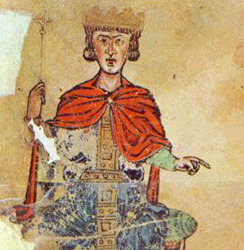
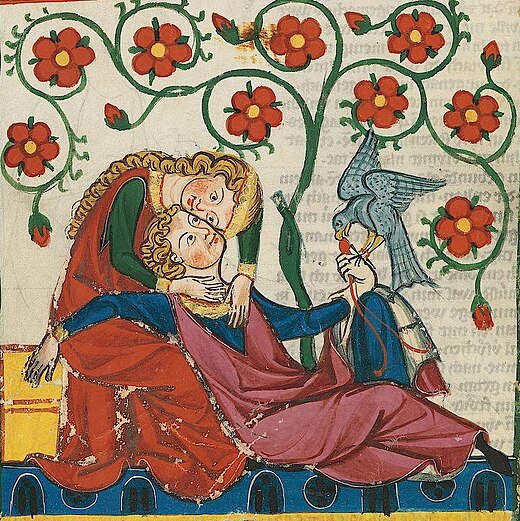






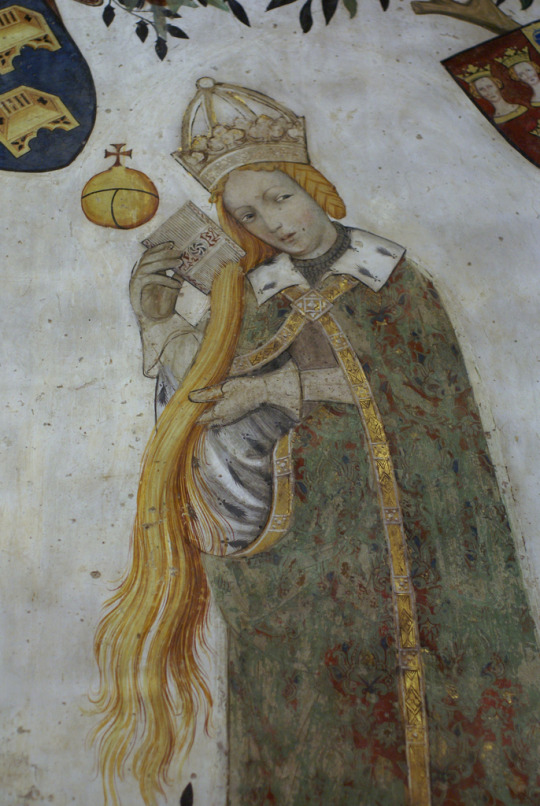
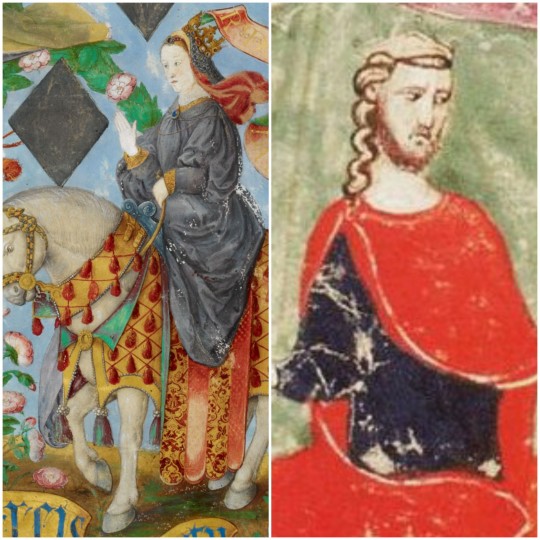
The Bastard Kings and their families
This is series of posts are complementary to this historical parallels post from the JON SNOW FORTNIGHT EVENT, and it's purpouse to discover the lives of medieval bastard kings, and the following posts are meant to collect portraits of those kings and their close relatives.
In many cases it's difficult to find contemporary art of their period, so some of the portrayals are subsequent.
1) Manfred I of Sicily (1232 – 26 February 1266), son of Holy Roman Emperor Frederick II and Bianca Lancia
2) His parents, Holy Roman Emperor Frederick II (1194 – 1250), son of Constance I of Sicily and Holy Roman Emperor Frederick I; with Bianca Lancia (c. 1210 – c. 1246/1248), daughter of Bonifazio d'Agliano
3) His brother, Conrad IV of Germany ( 1228 – 1254), son of Holy Roman Emperor Frederick II and his wife Isabella II of Jerusalem
4) His nephew, Conradin (25 March 1252 – 29 October 1268), son of Conrad IV and his wife Elisabeth of Bavaria
5) His brother, Henry VII of Germany (1211 – 1242), son of Holy Roman Emperor Frederick II and his wife Constance of Aragon
6) His brother, Enzo of Sardinia ( c. 1218 – 1272), son of Holy Roman Emperor Frederick II and Adelaide
7) His wife, Beatrice of Savoy (1223 – 1259), daughter of Amadeus IV of Savoy and his wife Marguerite of Burgundy
8) His daughter with his wife Helena Angelina Doukaina, Beatrix of Sicily (1260 –1307)
9) His daughter with his wife Beatrice of Savoy, Constance II of Sicily (c. 1249 – 1302); with her husband Peter III of Aragon (c. 1239 –1285), son of James I of Aragon and his wife Violant of Hungary
#jonsnowfortnightevent2023#asoiaf#a song of ice and fire#day 10#historical parallels#medieval bastard kings#echoes of the past#bastard kings and their families#manfred i of sicily#holy roman emperor frederick ii#bianca lancia#conrad i of sicily#conradin#conrad ii of sicily#margaret of sicily#henry ii of sicily#enzo of sardinia#beatrice of savoy#beatrix of sicily#constance ii of sicily#peter iii of aragon#canonjonsnow
15 notes
·
View notes
Text

"Of all the prophecies in verse foretelling a future Saviour to which the West has given birth, Vergil's Fourth Eclogue is the most famous. Before celebrating in his mighty epic the future of Imperial Rome, the poet painted in this relatively short poem his picture of the future ruler of the world. He lent him all the attributes of the Messiah: as befits a son of the Gods he shall greet Life with a smile, he shall bring peace on earth and the Age of Gold, and shall evoke once more the kingdom of Apollo. The Middle Ages never paused to reflect that Vergil's promises might seem to be fulfilled in Augustus, Emperor of Peace, the poet's patron. To that Christian age such prophetic verses could bear one interpretation only — a miraculous fore telling of Christ's advent. That they foretold a "Ruler" was no deterrent, for men were wont to praise Christ as "King of the World" and "Emperor of All," and to represent him graphically, in a mandorla, throned on clouds, bearing the globe and law book in his hand and on his head the diadem: the stern Ruler of the Cosmos. To the pious mind it was but one miracle the more, that the heathen Vergil, like the prophets of the Ancient Covenant, had known and told the coming of the Redeemer. Thus this short poem, with its miraculous fore knowledge, earned for Vergil the admiration and reverence of the medieval world. This Vergilian prophecy provided the inspiration both in manner and matter for the song in which the Campanian poet, Peter of Eboli, extravagantly hailed the birth of Henry V’s only son. It is by no means without significance that Vergil thus stands by the cradle of the last and greatest Christian Emperor of the German Roman Imperium.
The learned Peter of Eboli was not the only poet and sooth sayer who offered his prophetic wares to the new-born child on the day following the Christmas of 1194. Godfrey of Viterbo, the tutor of Henry VI, hailed the boy as the future Saviour foretold of prophets, the time-fulfilling Caesar. Even before the birth Godfrey had in sibylline speech informed his master that the coming son was destined to prove the long-awaited King of all the World, who should unite East and West as the Tiburtine sibyl had foretold. And later the story ran that East and West had cried aloud with joy at the birth of the imperial heir. Meanwhile other and less flattering predictions gained currency which had likewise accompanied the birth of the youngest Hohenstaufen. The Breton wizard Merlin was said to have spoken of the child's "wondrous and unhoped for birth" and in dark mysterious words to have hinted at disaster. The child would be a lamb, to be torn in pieces, but not to be devoured; he was to be a raging lion too amongst his own. The Calabrian Cistercian, the Abbot Joachim of Flora, the "Fore-runner" of St. Francis, was swift to recognise in the new-born child the, future Scourge of the World, the AntiChrist who was to bring confusion in his train. The Abbot, indeed, full of prophetic fire, was said to have informed the Emperor betimes that the Empress — overlain by a demon — was pregnant, without yet knowing of her pregnancy. The Empress too had had a dream and it had been revealed to her that she was to bear the fiery brand, the torch of Italy.
Constance obsessed the imagination of her contemporaries as few empresses have done. The strangely-secluded girlhood of the heiress of Sicily, posthumous daughter of the gifted Norman king and state-maker, Roger II, the great blondbearded Viking: her belated marriage, when she was already over thirty, with Barbarossa's younger son, her junior by ten years: her nine years of childlessness: the unexpected conception by the ageing woman: all this was — or seemed — mysterious enough to the people of her time to furnish ample material for legend. According to current rumour Constance's mother, Beatrice, daughter of Count Gunther of Rethel, had been a prey to evil dreams when, after the death of King Roger, she was brought to bed of the future Empress. And the augurs of the half-oriental Norman court declared that Constance would bring dire ruin on her fatherland. To avert this evil fate, no doubt, Constance was at once doomed to be a nun. The fact that the princess actually spent long periods in various nunneries in Palermo may well have strengthened such a report. The story further ran that Constance had been most unwilling to marry at all, and this coloured Dante's conception of her: because she left her "pleasant cloister's pale" under pressure and against her will, he gave the Empress a place in Paradise. The tale that Constance had taken the veil was widely believed, and later deliberately circulated by the Guelfs out of malice towards her son. The similar super stition of a later day foretold that a nun should be the mother of Anti-Christ. Meantime this first and only pregnancy of the forty-year old empress gave rise to another cycle of legend. It became the fashion to represent Constance as being consider ably older than she was, in order to approximate the miracle of this belated conception to Bible precedent, and she is tradition ally depicted as a wrinkled old woman. The rumour that the child was supposititious was bound to follow, and it was given out that he was in reality the son of a butcher. Shrewd woman that she was, Constance had taken measures to forestall such gossip: she had had a tent erected in the open market place, and there in the sight of all she had borne her son and proudly displayed her well-filled breasts — so the counterrumour ran.
Not in Palermo, but in Jesi, a small town dating from Roman times, in the March near Ancona, Constance brought her son to birth. After he was Emperor, Frederick sang the praises of his birthplace in a remarkable document. He called Jesi his Bethlehem, and the Divine Mother who bore him he placed on the same plane as the Mother of our Lord. Now the Ancona neighbourhood with its landscapes belongs to the most sacred regions of Renaissance Italy. As soon as the Italian people awoke to self-consciousness it recognised this as a sancta regio and consecrated it as such. From 1294 — a hundred years after the birth of the Staufen boy — the Virgin's house from Nazareth stood in the Ancona Marches, and Loreto, where it eventually came to rest, became one of the most famous places of pilgrimage in Italy. So it need cause no surprise that the March — the home moreover of Raphael — supplies the actual landscape basis (so far as a mythical landscape has a real prototype) for innumerable pictures of the Madonna playing with the Holy Child. These sunlit scenes played no part in the actual childhood of the boy. A few months after his birth Constance had the " blessed son " — to whom for the moment she gave the name of Constantine — removed to Foligno near Assisi and placed in the care of the Duchess of Spoleto, while the Empress herself hastened back to her Sicilian kingdom. She had only stayed in Jesi for her confinement, while the Emperor Henry travelled south to repress a Sicilian insurrection. This he accomplished with severity and bloodshed, and at last, after years of toil and fighting, he took possession of the hereditary country of his consort. All that Barbarossa had once dreamed, and had hoped to achieve through the Sicilian marriage of his son: to checkmate the exasperating Normans who always sided with the enemies of the Empire; to secure in the extreme south a firm fulcrum for the Empire of the Hohenstaufen, corresponding to their stronghold north of the Alps, and from these two bases — independent of the favour or disfavour of the German princes — to supervise and hold in check the Patrimonium between, and the ever-restive Italy: all this had reached fulfilment one day before the heir to this imperial power was born. Escorted by Saracen trumpeters, Henry with unexampled pomp entered as victor into the conquered city of Palermo, the terrified populace falling on their knees as he rode by, and on Christmas Day 1194 he was crowned King of Sicily in the cathedral of the capital. He was soon able to announce in one and the same letter both the victorious outcome of his cam paigns and the birth of his son and heir. The assurance of the succession gave full value to the conquest of the southern kingdom, a hereditary not an elective monarchy, and to the other great achievements of the indefatigable Emperor."
Ernst Kantorowicz, Frederick the Second, pp. 3-6
#history#historicwomendaily#constance i of sicily#frederick ii#sicily#house of hauteville#house of hohenstaufen#people of sicily#women of sicily#norman swabian sicily#myedit#historyedit
9 notes
·
View notes
Text
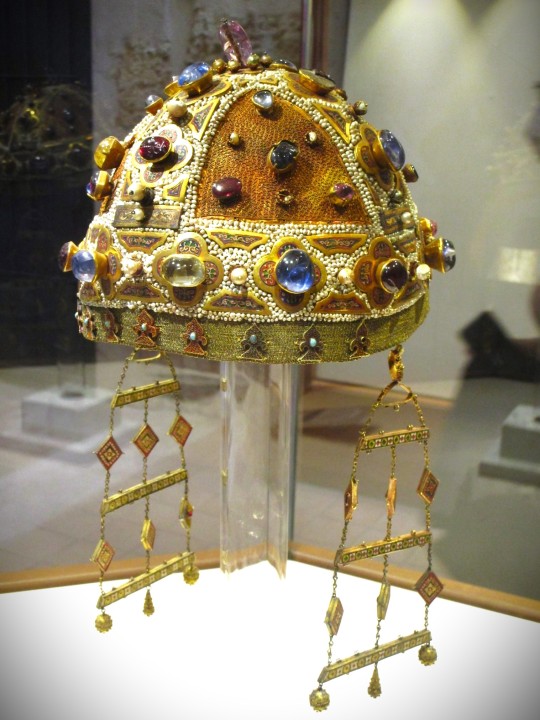
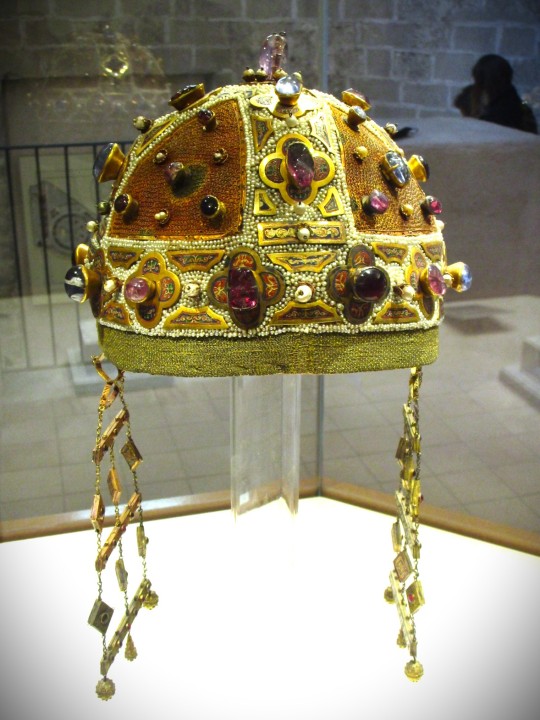
Constance of Aragon's Crown - c. 1220-1222, gold and gilded silver filigree, glazes, pearls, and polychrome stones - in the Treasury of the Cathedral of Palermo, Sicily - Photos by Charles Reeza
As the result of arranged marriages negotiated by her brother, Constance became the Queen of Hungary at the age of 19, the Queen of Sicily at the age of 30 when she married King Frederick II (who was only 14 years old), Queen of Germany when she was 36 and Frederick was crowned King of Germany, and at the age of 41, when her husband became the Holy Roman Emperor, she was crowned Holy Roman Empress with this crown. She died of malaria at the age of 43 and was entombed in the Palermo Cathedral, in a Roman sarcophagus, wearing her crown.
173 notes
·
View notes
Text
Wives and Daughters of Holy Roman Emperors: Age at First Marriage
I have only included women whose birth dates and dates of marriage are known within at least 1-2 years, therefore, this is not a comprehensive list.
This list does not include women who died before their husbands were crowned Emperor. It spans between the beginning of the reign of Otto I (962 CE) and the end of the reign of Francis II (1806 CE).
The average age at first marriage among these women was 17. The sample size was 91 women. The youngest bride, Bianca Maria Sforza, was just 2 years old when she wed her first husband, who was himself 9. The oldest bride, Constance of Sicily, was 32 years old.
Adelaide of Italy, wife of Otto I, HRE: age 15 when she married Lothair II, King of Italy, in 947 CE
Liutgarde of Saxony, daughter of Otto I, HRE: age 15 when she married Conrad the Red, Duke of Lorraine, in 947 CE
Theophanu, wife of Otto II, HRE: age 17 when she married Otto in 972 CE
Cunigunde of Luxembourg, wife of Henry II, HRE: age 24 when she married Henry in 999 CE
Gisela of Swabia, wife of Conrad II, HRE: age 12 when she married Brun I of Brunswick in 1002 CE
Agnes of Poitou, wife of Henry III, HRE: age 18 when she married Henry in 1043 CE
Matilda of Germany, daughter of Henry III, HRE: age 11 when she married Rudolf of Rheinfelden in 1059 CE
Judith of Swabia, daughter of Henry III, HRE: age 9 when she married Solomon, King of Hungary in 1063 CE
Bertha of Savoy, wife of Henry IV, HRE: age 15 when she married Henry in 1066 CE
Agnes of Waiblingen, daughter of Henry IV, HRE: age 14 when she married Frederick I, Duke of Swabia in 1086 CE
Empress Matilda, wife of Henry V, HRE: age 12 when she married Henry in 1114 CE
Beatrice I, Countess of Burgundy, wife of Frederick I, HRE: age 13 when she married Frederick in 1156 CE
Beatrice, daughter of Frederick I, HRE: age 10 when she married Guillaume II, Count of Chalon in 1173 CE
Constance, Queen of Sicily, wife of Henry IV, HRE: age 32 when she married Henry IV in 1186 CE
Beatrice of Swabia, first wife of Otto IV, HRE: age 14 when she married Otto in 1212 CE
Maria of Brabant, second wife of Otto IV, HRE: age 24 when she married Otto in 1214 CE
Constance of Aragon, first wife of Frederick II, HRE: age 19 when she married Emeric of Hungary in 1198 CE
Isabella II of Jerusalem, second wife of Frederick II, HRE: age 13 when she married Frederick in 1225 CE
Isabella of England, third wife of Frederick II, HRE: age 21 when she married Frederick in 1235 CE
Margaret of Sicily, daughter of Frederick II, HRE: age 14 when she married Albert II, Margrave of Meissen in 1255 CE
Anna of Hohenstaufen, daughter of Frederick II, HRE: age 14 when she married John III Doukas Vatatzes in 1244 CE
Marie of Luxembourg, daughter of Henry VII, HRE: age 18 when she married Charles IV of France in 1322 CE
Beatrice of Luxembourg, daughter of Henry VII, HRE: age 13 when she married Charles I of Hungary in 1318 CE
Margaret II, Countess of Hainaut, wife of Louis IV, HRE: age 13 when she married Louis in 1324 CE
Matilda of Bavaria, daughter of Louis IV, HRE: age 10 when she married Frederick II, Margrave of Meissen in 1323 CE
Beatrice of Bavaria, daughter of Louis IV, HRE: age 12 when she married Eric XII of Sweden in 1356 CE
Anna von Schweidnitz, wife of Charles IV, HRE: age 14 when she married Charles in 1353 CE
Elizabeth of Pomerania, wife of Charles IV, HRE: age 16 when she married Charles in 1378 CE
Margaret of Bohemia, daughter of Charles IV, HRE: age 7 when she married Louis I of Hungary in 1342 CE
Catherine of Bohemia, daughter of Charles IV, HRE: age 14 when she married Rudolf IV, Duke of Austria in 1356 CE
Elisabeth of Bohemia, daughter of Charles IV, HRE: age 8 when she married Albert III, Duke of Austria in 1366 CE
Anne of Bohemia, daughter of Charles IV, HRE: age 16 when she married Richard II of England in 1382 CE
Margaret of Bohemia, daughter of Charles IV, HRE: age 8 when she married John III, Burgrave of Nuremburg in 1381 CE
Barbara of Cilli, wife of Sigismund, HRE: age 13 when she married Sigismund in 1405 CE
Elizabeth of Luxembourg, daughter of Sigismund, HRE: age 13 when she married Albert II of Germany in 1422 CE
Eleanor of Portugal, wife of Frederick III, HRE: age 18 when she married Frederick in 1452 CE
Kunigunde of Austria, daughter of Frederick III, HRE: age 22 when she married Albert IV, Duke of Bavaria in 1487 CE
Bianca Maria Sforza, wife of Maximilian I, HRE: age 2 when she married Philibert I, Duke of Savoy in 1474 CE
Margaret of Austria, daughter of Maximilian I, HRE: age 17 when she married John, Prince of Asturias in 1497 CE
Barbara von Rattal, daughter of Maximilian I, HRE: age 15 when she married Siegmund von Dietrichstein in 1515 CE
Dorothea of Austria, daughter of Maximilian I, HRE: age 22 when she married Johan I of East Frisia in 1538 CE
Isabella of Portugal, wife of Charles V, HRE: age 23 when she married Charles in 1526 CE
Maria of Austria, daughter of Charles V, HRE: age 20 when she married Maximilian II, HRE in 1548 CE
Joanna of Austria, daughter of Charles V, HRE: age 17 when she married John Manuel, Prince of Portugal in 1552 CE
Margaret of Parma, daughter of Charles V, HRE: age 14 when she married Alessandro de’ Medici, Duke of Florence, in 1536 CE
Elizabeth of Austria, daughter of Ferdinand I, HRE: age 16 when she married Sigismund II Augustus of Poland in 1543 CE
Anna of Austria, daughter of Ferdinand I, HRE: age 17 when she married Albert V, Duke of Bavaria in 1546 CE
Maria of Austria, daughter of Ferdinand I, HRE: age 15 when she married William of Julich-Cleves-Berg in 1546 CE
Catherine of Austria, daughter of Ferdinand I, HRE: age 16 when she married Francesco III Gonzaga in 1559 CE
Eleanor of Austria, daughter of Ferdinand I, HRE: age 27 when she married William I, Duke of Mantua in 1561 CE
Barbara of Austria, daughter of Ferdinand I, HRE: age 26 when she married Alfonso II d’Este in 1565 CE
Joanna of Austria, daughter of Ferdinand I, HRE: age 18 when she married Francesco I de’ Medici in 1565 CE
Anna of Austria, daughter of Maximilian II, HRE: age 21 when she married Philip II of Spain in 1570 CE
Elisabeth of Austria, daughter of Maximilian II, HRE: age 16 when she married Charles IX of France in 1570 CE
Anna of Tyrol, wife of Matthias, HRE: age 26 when she married Matthias in 1611 CE
Eleonora Gonzaga the Elder, wife of Ferdinand II, HRE: age 24 when she married Ferdinand in 1622 CE
Maria Anna of Austria, daughter of Ferdinand II, HRE: age 25 when she married Maximilian I, Elector of Bavaria in 1635 CE
Cecilia Renata of Austria, daughter of Ferdinand II, HRE: age 26 when she married Władysław IV of Poland in 1637 CE
Maria Anna of Spain, wife of Ferdinand III, HRE: age 25 when she married Ferdinand in 1631 CE
Maria Leopoldine of Austria, wife of Ferdinand III, HRE: age 16 when she married Ferdinand in 1648 CE
Eleonora Gonzaga the Younger, wife of Ferdinand III, HRE: age 21 when she married Ferdinand in 1651 CE
Mariana of Austria, daughter of Ferdinand III, HRE: age 15 when she married Philip IV of Spain in 1649 CE
Eleonore of Austria, daughter of Ferdinand III, HRE: age 17 when she married Michael I of Poland in 1670 CE
Maria Anna Josepha of Austria, daughter of Ferdinand III, HRE: age 24 when she married Johann Wilhelm II, Elector Palatine in 1678 CE
Margaret Theresa of Spain, wife of Leopold I, HRE: age 15 when she married Leopold in 1666 CE
Claudia Felicitas of Spain, wife of Leopold I, HRE: age 20 when she married Leopold in 1673 CE
Eleonore Magdalene of Neuberg, wife of Leopold I, HRE: age 21 when she married Leopold in 1676 CE
Maria Antonia of Austria, daughter of Leopold I, HRE: age 16 when she married Maximilian II Emanuel, Elector of Bavaria in 1685 CE
Maria Anna of Austria, daughter of Leopold I, HRE: age 25 when she married John V of Portugal in 1708 CE
Wilhelmine Amalie of Brunswick, wife of Joseph I, HRE: age 26 when she married Joseph in 1699 CE
Maria Josepha of Austria, daughter of Joseph I, HRE: age 20 when she married Augustus III of Poland in 1719 CE
Maria Amalia of Austria, daughter of Joseph I, HRE: age 21 when she married Charles VII, HRE in 1722 CE
Elisabeth Christine of Brunswick, wife of Charles VI, HRE: age 17 when she married Charles in 1708 CE
Maria Theresa of Austria, daughter of Charles VI, HRE: age 19 when she married Francis I, HRE in 1736 CE
Maria Anna of Austria, daughter of Charles VI, HRE: age 26 when she married Charles Alexander of Lorraine in 1744 CE
Maria Antonia of Bavaria, daughter of Charles VII, HRE: age 23 when she married Frederick Christian, Elector of Saxony in 1747 CE
Maria Anna Josepha of Bavaria, daughter of Charles VII, HRE: age 20 when she married Louis George of Baden-Baden in 1755 CE
Maria Josepha of Bavaria, daughter of Charles VII, HRE: age 26 when she married Joseph II, HRE in 1765 CE
Maria Christina, daughter of Francis I, HRE: age 24 when she married Albert Casimir, Duke of Teschen in 1766 CE
Maria Amalia, daughter of Francis I, HRE: age 23 when she married Ferdinand I, Duke of Parma in 1769 CE
Maria Carolina, daughter of Francis I, HRE: age 16 when she married Ferdinand IV & III of Sicily in 1768 CE
Maria Antonia, daughter of Francis I, HRE: age 14 when she married Louis XVI of France in 1770 CE
Maria Josepha of Bavaria, wife of Joseph II, HRE: age 26 when she married Joseph in 1765 CE
Maria Luisa of Spain, wife of Leopold II, HRE: age 19 when she married Leopold in 1764 CE
Maria Theresa of Austria, daughter of Leopold II, HRE: age 20 when she married Anthony of Saxony in 1787 CE
Maria Clementina of Austria, daughter of Leopold II, HRE: age 20 when she married Francis I of Sicily in 1797 CE
Maria Theresa of Naples, wife of Francis II, HRE: age 18 when she married Francis in 1790 CE
Marie Louise, daughter of Francis II, HRE: age 19 when she married Napoleon I of France in 1810 CE
Maria Leopoldina, daughter of Francis II, HRE: age 20 when she married Pedro I of Brazil and IV of Portugal in 1817 CE
Clementina, daughter of Francis II, HRE: age 18 when she married Leopold of Salerno in 1816 CE Marie Caroline, daughter of Francis II, HRE: age 18 when she married Frederick Augustus of Saxony in 1819 CE
34 notes
·
View notes
Text

This fancy tomb belongs to Constance I (r. 1194-1198), Queen regent of Sicily, who ruled for her son Frederick II. Cathedral of Palermo, Sicily.
#tomb#sarcophagus#palermo#italy#sicily#norman#church architecture#taphophilia#taphophile#medieval#history#travel#historical architecture#architecture#original photography#cathedral#photography#photographers on tumblr#wanderingjana
52 notes
·
View notes
Text
Events 1.27 (before 1970)
98 – Trajan succeeds his adoptive father Nerva as Roman emperor; under his rule the Roman Empire will reach its maximum extent. 945 – The co-emperors Stephen and Constantine are overthrown and forced to become monks by Constantine VII, who becomes sole emperor of the Byzantine Empire. 1186 – Henry VI, the son and heir of the Holy Roman Emperor Frederick I, marries Constance of Sicily. 1302 – Dante Alighieri is condemned in absentia and exiled from Florence. 1343 – Pope Clement VI issues the papal bull Unigenitus to justify the power of the pope and the use of indulgences. Nearly 200 years later, Martin Luther would protest this. 1606 – Gunpowder Plot: The trial of Guy Fawkes and other conspirators begins, ending with their execution on January 31. 1695 – Mustafa II becomes the Ottoman sultan and Caliph of Islam in Istanbul on the death of Ahmed II. Mustafa rules until his abdication in 1703. 1759 – Spanish forces clash with indigenous Huilliches of southern Chile in the battle of Río Bueno. 1776 – American Revolutionary War: Henry Knox's "noble train of artillery" arrives in Cambridge, Massachusetts. 1785 – The University of Georgia is founded, the first state-chartered public university in the United States. 1820 – A Russian expedition led by Fabian Gottlieb von Bellingshausen and Mikhail Petrovich Lazarev discovers the Antarctic continent, approaching the Antarctic coast. 1825 – The U.S. Congress approves Indian Territory (in what is present-day Oklahoma), clearing the way for forced relocation of the Eastern Indians on the "Trail of Tears". 1868 – Boshin War: The Battle of Toba–Fushimi begins, between forces of the Tokugawa shogunate and pro-Imperial factions; it will end in defeat for the shogunate, and is a pivotal point in the Meiji Restoration. 1869 – Boshin War: Tokugawa rebels establish the Ezo Republic in Hokkaidō. 1874 – Modest Mussorgsky's opera Boris Godunov premieres in Mariinsky Theatre in St.Petersburg. 1880 – Thomas Edison receives a patent for his incandescent lamp. 1916 – World War I: The British government passes the Military Service Act that introduces conscription in the United Kingdom. 1918 – Beginning of the Finnish Civil War. 1924 – Six days after his death Lenin's body is carried into a specially erected mausoleum. 1927 – Ibn Saud takes the title of King of Nejd. 1928 – Bundaberg tragedy: a diphtheria vaccine is contaminated with Staph. aureus bacterium, resulting in the deaths of twelve children in the Australian town of Bundaberg. 1939 – First flight of the Lockheed P-38 Lightning. 1943 – World War II: The Eighth Air Force sorties ninety-one B-17s and B-24s to attack the U-boat construction yards at Wilhelmshaven, Germany. This was the first American bombing attack on Germany. 1944 – World War II: The 900-day Siege of Leningrad is lifted. 1945 – World War II: The Soviet 322nd Rifle Division liberates the remaining inmates of Auschwitz-Birkenau. 1951 – Nuclear testing at the Nevada Test Site begins with Operation Ranger. 1961 – The Soviet submarine S-80 sinks when its snorkel malfunctions, flooding the boat. 1965 – South Vietnamese Prime Minister Trần Văn Hương is removed by the military junta of Nguyễn Khánh. 1967 – Apollo program: Astronauts Gus Grissom, Ed White and Roger Chaffee are killed in a fire during a test of their Apollo 1 spacecraft at the Kennedy Space Center, Florida. 1967 – Cold War: The Soviet Union, the United States, and the United Kingdom sign the Outer Space Treaty in Washington, D.C., banning deployment of nuclear weapons in space, and limiting the usage of the Moon and other celestial bodies to peaceful purposes.
1 note
·
View note
Text
If anything Frederick II's real name being Constantine named after his mother Queen Constance of Sicily who was rumored to have birthed him in the town square as she was 40 and needed to prove she had the baby is only made funnier that at age 14 they married Fred to a 32 year old Portugeese widow the former Queen of Hungary, Constance
1 note
·
View note
Text

Margaret of Sicily (also called Margaret of Hohenstaufen or Margaret of Germany) (1 December 1241, in Foggia – 8 August 1270, in Frankfurt-am-Main) was a Princess of Sicily and Germany, and a member of the House of Hohenstaufen. By marriage she was Landgravine of Thuringia and Countess Palatine of Saxony.
She was the daughter of Frederick II, Holy Roman Emperor, King of Sicily and Germany, by his third wife, Isabella of England. Her paternal grandparents were Henry VI, Holy Roman Emperor and Constance of Sicily. Her maternal grandparents were John of England and Isabella of Angoulême.
#Margaret of Sicily#Margaret of Hohenstaufen#Margaret of Germany#House Hohenstaufen#XIII century#women in history
0 notes
Text

THE DESCRIPTION OF SAINT ELIZABETH OF PORTUGAL The Queen Consort Feast Day: July 4
Elizabeth, daughter of Peter III of Aragon and Constance of Sicily, and the sister of three kings: Alfonso II and James II of Aragon and Frederick III of Sicily, was born in Aljafería Palace, Zaragoza, Kingdom of Aragon on January 4, 1271. At 10 years of age, she was given in marriage to Denis of Portugal, and bore two children, Alfonso, later became Afonso IV of Portugal, and Constance, who married King Ferdinand IV of Castile. Elizabeth is the great-niece of another saint - Elizabeth of Hungary.
Eventually, her prayer and patience succeeded in converting her husband, who had been leading a sinful life. She was modest in her dress, humble in conversation, and charitable towards the poor. It was her habit to provide lodging for pilgrims and to procure dowries for the poor girls of the kingdom.
One of the best moments of her life was the miracle of the roses. Caught one day by her husband, while carrying bread in her apron, the food was turned into roses. Since this occurred in January, Denis reportedly had no response and let his wife continue.
Elizabeth would serve as intermediary between her husband and Afonso, during the Civil War between 1322 and 1324. The Infante greatly resented the king, whom he accused of favoring the king's illegitimate son, Afonso Sanches. Denis was prevented from killing his son through the intervention of the Queen, when she, in 1323, mounted on a mule, positioned herself between both opposing armies on the field of Alvalade in order to prevent the combat. Peace returned in 1324, once the illegitimate son was sent into exile, and the Infante swore loyalty to the king.
In 1325, after the death of her spouse, she retired to the monastery of the Poor Clare nuns, now known as the Monastery of Santa Clara-a-Velha in Coimbra, and entered the Third Order of St. Francis, devoting the rest of her life to the poor and sick in obscurity. During the great famine in 1293, she donated flour from her cellars to the starving in Coimbra. She was also known for being modest in her dress and humble in conversation, for providing lodging for pilgrims, distributing small gifts, paying the dowries of poor girls, and educating the children of poor nobles.
She was a benefactor of various hospitals (Coimbra, Santarém and Leiria) and of religious projects, such as the Trinity Convent in Lisbon, chapels in Leiria and Óbidos, and the cloister in Alcobaça.
She died on July 4, 1336 on her way to Estremoz Castle, where she was supposed to settle a family quarrel. She was called to act once more as a peacemaker, when Afonso IV marched his troops against King Alfonso XI of Castile, to whom he had married his daughter Maria, and who had neglected and ill-treated her.
In spite of age and weakness, the Queen-dowager insisted on hurrying to Estremoz, where the two kings' armies were drawn up. She again stopped the fighting and caused terms of peace to be arranged. But the exertion brought on her final illness. As soon as her mission was completed, she took to her bed with a fever from which she died, and earned the title of 'Peacemaker' on account of her efficacy in solving disputes.
Elizabeth was beatified in 1526 and canonized a saint by Pope Urban VIII on May 25, 1625. Her feast is also kept on the Franciscan Calendar of Saints.
Since the establishment in 1819 of the Diocese of San Cristóbal de La Laguna (Canary Islands, Spain), Saint Elizabeth is the co-patron of the diocese and of its cathedral pursuant to the papal bull issued by Pope Pius VII.
#random stuff#catholic#catholic saints#franciscans#elizabeth of portugal#isabel de portugal#isabel de aragón
1 note
·
View note
Text
Sicily: An Island at the Crossroads of History. Ch. 7- The Vespers
The Sicilian Vespers led to the ousting of the French as rulers of Sicily and the installation of the Spaniards as rulers.
When Frederick II of the Hohenstaufen house died in 1250, Sicily sank back into chaos and confusion. (yeah, you're going to read that a LOT during this history recap) The barons took over, each fighting to enrich himself and grab as much as possible. (oh, you'll read THAT a lot too) Frederick's son Conrad was crowned emperor in Germany, but was stuck there, so Fred's bastard son Manfred was entrusted with control of Sicily and southern Italy. Pope Innocent IV didn't think bastard sons ought to be ruling anything and suggested Manfred turn control of the kingdom over to someone else... the someone else just happening to be... himself, the Pope. Manfred declined the offer and the Pope excommunicated him altogether. Innocent then declared someone else King, but everyone else just sort of ignored it.
Manfred was, I hear, an astonishingly good-looking man, intelligent, learned, and had devastating charm. Bastard, indeed! By 1258, Manfred, using such abilities as nature had endowed him with, had convinced the Sicilian barons to proclaim him King.
In the meantime, another daughter of Frederick, Constance, married Peter, heir to the throne of Aragon.
The successor Pope to Innocent, however, Urban IV, had not given up on puppeteering in Sicily, and named Charles of Anjou as the man who should be king of Sicily. Charles was cold, cruel, and vastly ambitious, and recognized an opportunity when he saw one. He was crowned King of Sicily in Rome in 1266 by Urban's successor, Clement IV. Charles then invaded and chased out Manfred.
With this event, the Hohenstaufen line, and Sicily's golden age, was truly ended.
The Angevin (Anjou family) line showed little interest in Sicily, concentrating more attention on the mainland, but the Sicilians weren't so easy to ignore. They revolted in 1267, and were promptly put back into place. But the severity of the repression left a lingering resentment. Administration of the island was heavy-handed, with landowners needing to prove their ownership. This was difficult for many and if it wasn't done satisfactorily, the land was confiscated and handed out to the new King's friends, all Frenchmen. In what would become a recurring theme, the Sicilians lost out.
In general, Sicily remained neglected, and the Sicilians themselves could only conclude that they belonged to an obscure and unimportant province that their ruler could not be bothered to care about.
The Sicilian Vespers Here we find one John of Procida. A native of Salerno, he had been the personal physician of Frederick when he died. He appealed to Peter of Aragon to overthrow the Angevins. By 1282, the Angevins were pretty thoroughly detested, both for the severity of their taxation and their general arrogance. The incident that precipitated John of Procida's call to overthrow the Angevins was what has come to be called the Sicilian Vespers. When a drunk French sergeant hit on a Sicilian woman on March 30, 1282 as the bells were ringing for Vespers, her husband's pent-up anger boiled over into beating the sergeant, which boiled over to a murder. The Sicilian crowd's anger then boiled over and the murder led to a riot, the riot to a massacre, and by morning, 2000 French were dead. Ya gotta be careful about riling up Sicilians. The rising spread and on August 30, Peter of Aragon and his army landed at the far northwestern city of Trapani.
By September, Charles was driven back to the northeastern corner of the island at Messina and was forced to recognize that the Spanish conquest was basically a done-deal.
But Charles was a stubborn bastard and refused to recognize the legitimacy, and actually challenged Peter to settle up mano a mano in a duel. Charles being 55, and Peter only 40, they decided it would be more fair that each would be accompanied by 100 knights. The day was set, but they forgot to set a particular time.
In a comic scenario, the "fight" went something like this: Peter showed up early in the day, and finding no French, declared them cowards and himself the victor by forfeiture. Later in the day, the French showed up and finding no Spaniards, declared the Spaniards cowards and themselves the victors by forfeiture. I guess they at least saved face and lives this way.
But neither side giving an inch, the Regno was split with Charles remaining King of "Sicily" in Naples, and Peter calling himself king of Sicily in Palermo. This is the initiation of "The Two Sicilies".
Charles died in 1285. He had neglected Sicily. The Sicilians had pissed him off with their stubborn rebellion, and he had become bored with them, considering them poor, unprofitable, and therefore useless to him. Moreover, he thought they were a mongrel race of Latin, Greek and Arab, and therefore not to be taken seriously as a people.
Charles II was the heir, but he was being held in prison. The Angevin Kings in France still wished to recover Sicily, and the Papacy was looking after its own prestige, having granted Sicily to the Angevins.
Sicilians, on the other hand, preferred Spanish rule, but this had a consequence: it cut them off from Naples, AND... the burgeoning Italian renaissance, which would subsequently largely pass over Sicily.
The Aragonese, James "the Just" was proclaimed King of Sicily in 1286. He sought Pope Honorius' blessing and was promptly rewarded for his efforts with excommunication. Honorius then, to add injury to insult, ordered an invasion of Sicily in 1287... which was a disaster.
A number of years passed in which the decisions about who would govern/rule Sicily were made without any concern for the Sicilians themselves. But this was so standard, and would continue to be so, that most of the history of Sicily is really the history of decisions about its government made elsewhere. The machinations behind the scenes are byzantine, and frankly, have little to do with Sicily, so I'm not going to bother to even write them down here.
In 1301, the treaty of Caltabellota was signed: The Angevins would withdraw from Sicily, and Frederick would call himself King of Trinacria (the ancient Greek name for Sicily) rather than King of Sicily, so that the Angevins could still call themselves kings of Sicily. This is a prime example of European monarchy BS, so that each could feel a little less butt-hurt be the loss of land, by retaining a title.
The Sicilians themselves didn't care too much about which of these foreigners called themselves whatever, as long as said foreigners didn't inflict themselves on the island itself. The Sicilians had suffered a lot since the Vespers 20 years prior, but they were steadfast on this one point: they would not accept French rule.
1 note
·
View note
Text
Castel del Monte is a 13th-century citadel and castle situated on a hill in Andria in the Apulia region of southeast Italy. It was built during the 1240s by King Frederick II, who had inherited the lands from his mother Constance of Sicily. Wikipedia

4 notes
·
View notes
Text
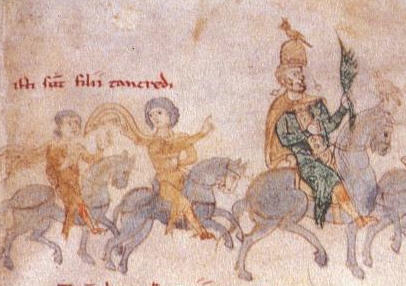

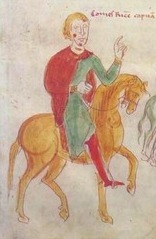

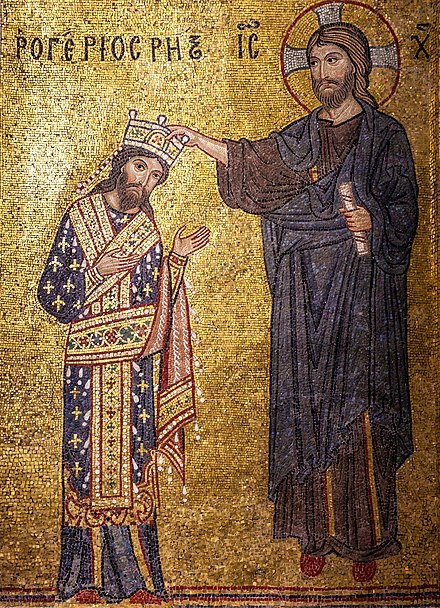
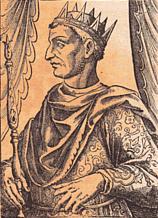
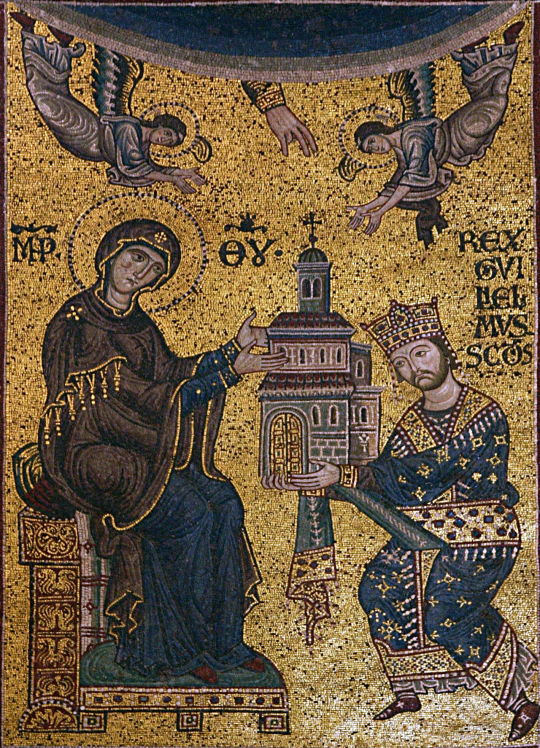


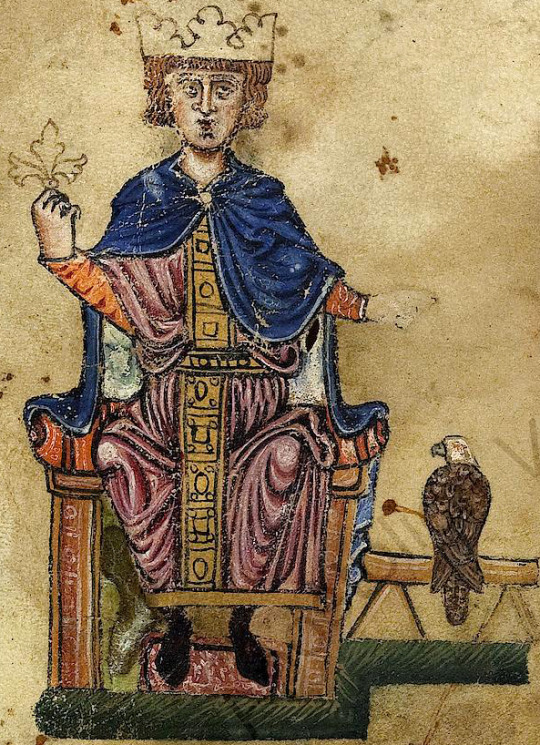
The Bastard Kings and their families
This is series of posts are complementary to this historical parallels post from the JON SNOW FORTNIGHT EVENT, and it's purpouse to discover the lives of medieval bastard kings, and the following posts are meant to collect portraits of those kings and their close relatives.
In many cases it's difficult to find contemporary art of their period, so some of the portrayals are subsequent.
1) Tancred I of Sicily ( 1138 – 1194), son of Roger III of Apulia and Emma of Lecce; with his sons Roger III of Sicily (1175 –1193) and William III of Sicily (c. 1186 – c. 1198)
2) His wife, Sibylla of Acerra (1153–1205), mother of Roger III and William III
3) His brother-in-law, Richard of Acerra (d. 1196)
4)His father, Roger III of Apulia (1118 – 1148), son of Roger II of Sicily and his wife Elvira of Castile
5) His grandfather, Roger II of Sicily (1095– 1154), son of Roger I of Sicily and his wife Adelaide del Vasto
6) His uncle, William I of Sicily (1120/1121 – 1166), son of Roger II of Sicily and his wife Elvira of Castile
7) His cousin, William II of Sicily (1153 – 1189), son of William I of Sicily and his wife Joan of England
8) His aunt, Constance I of Sicily (1154–1198), daughter of Roger II of Sicily and his wife Beatrice of Rethel
9) His uncle, Holy Roman Emperor Henry VI (1165 – 1197), son of Holy Roman Emperor Frederick I and his wife Beatrice I of Burgundy; and Constance I of Sicily's husband
10) His cousin, Holy Roman Emperor Frederick II (1194 – 1250), son of Constance I of Sicily and Holy Roman Emperor Frederick I
#jonsnowfortnightevent2023#asoiaf#a song of ice and fire#day 10#echoes of the past#historical parallels#medieval bastard kings#bastard kings and their families#tancred i of sicily#roger iii of sicily#william iii of sicily#sibylla of acerra#richard of acerra#roger iii of apulia#roger ii of sicily#william i of sicily#william ii of sicily#constance i of sicily#holy roman emperor henry vi#holy roman emperor frederick ii#canonjonsnow
7 notes
·
View notes
Photo

Et quia solum Guilielmum Capuanorum Principem habebat superstitem, veritus ne eumdem conditione humanae fragilitatis amitteret, Sibiliam sororem Ducis Burgundiae duxit uxorem, quae non multo post Salerni mortua est, et apud Caveam est sepulta. Tertio Beatricem filiam Comitis de Reteste in uxoris accepit, de qua filiam habuit, quem Constantiam appellavit.
Chronicon Romualdi II, archiepiscopi Salernitani, p. 16
Beatrice was born around 1135 in the county of Rethel (northern France) from Gunther (also know as Ithier) de Vitry, earl of Rethel, and Beatrice of Namur.
On her mother’s side, Beatrice descended from Charlemagne (through his son, Louis the Pious), while on the paternal side she was a grandniece of Baldwin II King of Jerusalem (her paternal grandmother Matilda, titular Countess of Rethel, was the King’s younger sister). The Counts of Rethel were also vassals of the powerful House of Champagne, known for its successful marriage politics (Count Theobald IV of Blois-Champagne’s daughter, Isabelle, would marry in 1143 Duke Roger III of Apulia, eldest son of King Roger II of Sicily).
In 1151, Beatrice married this same Roger. The King of Sicily was at his third marriage at this point. His first wife had been Elvira, daughter of King Alfonso VI the Brave of León and Castile and of Galicia, who bore him six children (five sons and one daughter). However, when four of his sons (Roger, Tancred, Alphonse and the youngest, Henry) died before him, leaving only William as his heir, Roger II must have feared for his succession. In 1149, the King then married Sibylla, daughter of Duke Hugh II of Burgundy. She bore him a son, Henry (named after his late older brother), and two years later died of childbirth complications giving birth to a stillborn son. As this second Henry died young too, Roger thought about marrying for a third (and hopefully last) time.
It is possible that Roger’s choice of his third wife had been influenced by the future bride’s family ties with the Crusader royalties as Beatrice was related with both Queen Melisende of Jerusalem and the Queen’s niece Constance of Hauteville, ruling Princess of Antioch. Constance was also a first cousin once removed of Roger, who had (unsuccessfully) tried to snatch the Antiochian principality from her when her father Bohemond II was killed in battle 1130, leaving his two years old daughter as heir.
Beatrice bore Roger only a daughter, Constance, who was born in Palermo on November 2nd 1154. This baby girl (who would one day become Queen of Sicily) never knew her father as he died on February 26th.
Nothing certain is known about her widowed life, although we can suppose she took care of her only daughter. Beatrice died in Palermo on March 30th 1185, living enough to see Constance being betrothed to Emperor Frederick Barbarossa’s son, Henry.
The body of the Dowager Queen was laid to rest in the Chapel of St. Mary Magdalene, together with her predecessor, Elvira, and her step-children, Henry, Tancred, Alphonse and Roger. Through her daughter, Beatrice would become Emperor Frederick II’s grandmother.
Sources
Cronica di Romualdo Guarna, arcivescovo Salernitano Chronicon Romualdi II, archiepiscopi Salernitani Versione di G. del Re, con note e dilucidazione dello stesso
Garofalo Luigi, Tabularium regiae ac imperialis capellae collegiatae divi Petri in regio panormitano palatio Ferdinandi 2. regni Utriusque Siciliae regis
Hayes Dawn Marie, Roger II of Sicily. Family, Faith, and Empire in the Medieval Mediterranean World
Houben Hubert, Roger II Of Sicily: A Ruler Between East And West
SICILY/NAPLES: COUNTS & KINGS
Walter Ingeborg, BEATRICE di Rethel, regina di Sicilia, in Dizionario Biografico degli Italiani, vol. 7
#historicwomendaily#women#history#women in history#historical women#House of Hauteville#Roger II of Sicily#Beatrice of Rethel#norman swabian sicily#costanza i#people of sicily#women of sicily#myedit#historyedit
34 notes
·
View notes
Photo





The monumental tombs of King Roger II, founder of the Kingdom of Sicily, and his daughter, Constance of Hauteville, with white marble canopies inlaid with glass mosaics - Palermo Cathedral
Photos by Charles Reeza
27 notes
·
View notes
Text
Queens and Princesses of the Spanish Kingdoms: Ages at First Marriage
I have only included women whose birth dates and dates of marriage are known within at least 1-2 years, therefore, this is not a comprehensive list. This data set ends with the transition to Habsburg-controlled Spain.
Sancha, wife of King Fernando I of Léon; age 14 when she married Fernando in 1032 CE
Ermesinda of Bigorre, wife of King Ramiro I of Aragon; age 21 when she married Ramiro in 1036 CE
Sancha, daughter of King Ramiro I of Aragon; age 18 when she married Count Ermengol III of Urgell in 1063 CE
Constance of Burgundy, wife of King Alfonso VI of Léon & Castile; age 19 when she married Count Hugh II of Chalon in 1065 CE
Felicia of Roucy, wife of King Sancho of Aragon; age 16 when she married Sancho in 1076 CE
Agnes of Aquitaine, wife of King Pedro I of Aragon; age 14 when she married Pedro in 1086 CE
Teresa, daughter of King Alfonso VI of Léon & Castile; age 13 when she married Count Henri of Burgundy in 1093 CE
Elvira, daughter of King Alfonso VI of Léon & Castile; age 15 when she married Count Raymond IV of Toulouse in 1094 CE
Bertha, wife of King Pedro I of Aragon; age 22 when she married Pedro in 1097 CE
Elvira, daughter of King Alfonso VI of Léon & Castile; age 17 when she married King Ruggero II of Sicily in 1117 CE
Berenguela of Barcelona, wife of King Alfonso VII of Léon & Castile; age 12 when she married Alfonso in 1128 CE
Urraca, daughter of King Alfonso VII of Léon; age 11 when she married King Garcia Ramirez of Navarre in 1144 CE
Petronilla, daughter of King Ramiro II of Aragon; age 14 when she married Count Ramon Berenguer IV of Barcelona in 1150 CE
Richeza of Poland, wife of King Alfonso VII of Léon & Castile; age 12 when she married Alfonso in 1152 CE
Sancha, daughter of King Alfonso VII of Léon & Castile; age 14 when she married King Sancho VI of Navarre in 1153 CE
Constanza, daughter of King Alfonso VII of Léon & Castile; age 16 when she married King Louis VII of France in 1154 CE
Urraca of Portugal, wife of King Fernando II of Léon; age 17 when she married Fernando in 1165 CE
Eleanor of England, wife of King Alfonso VIII of Castile; age 9 when she married Alfonso in 1170 CE
Sancha of Castile, wife of King Alfonso II of Aragon; age 20 when she married Alfonso in 1174 CE
Dulce, daughter of Queen Petronilla of Aragon; age 14 when she married King Sancho I of Portugal in 1174 CE
Berenguela, daughter of King Alfonso VIII of Castile; age 7 when she married Duke Conrad II of Swabia in 1187 CE
Marie of Montpellier, wife of King Pedro II of Aragon; age 10 when she married Viscount Raymond Geoffrey II of Marseille in 1192 CE
Garsenda of Foralquier, wife of Prince Alfonso II of Aragon; age 13 when she married Alfonso in 1193 CE
Constance of Toulouse, wife King Sancho VII of Navarre; age 15 when she married Sancho in 1195 CE
Constanza, daughter of King Alfonso II of Aragon; age 19 when she married King Emeric of Hungary in 1198 CE
Blanca of Castile, daughter of King Alfonso VIII of Castile; age 12 when she married King Louis VIII of France in 1200 CE
Eleonora, daughter of King Alfonso II of Aragon; age 22 when she married Count Raymond VI of Toulouse in 1204 CE
Urraca, daughter of King Alfonso VIII of Castile; age 19 when she married King Afonso II of Portugal in 1206 CE
Mafalda of Portugal, wife of King Enrique I of Castile; age 20 when she married Enrique in 1215 CE
Sancha, daughter of King Alfonso II of Aragon; age 25 when she married Count Raymond VII of Toulouse in 1211 CE
Elisabeth of Swabia, wife of King Fernando III of Castile; age 14 when she married Fernando in 1219 CE
Eleonora of Castile, wife of King Jaime I of Aragon; age 19 when she married Jaime in 1221 CE
Berenguela, daughter of King Alfonso IX of Léon; age 20 when she married Emperor Jean I of Brienne in 1224 CE
Marguerite of Bourbon, wife of King Teobaldo I of Navarre; age 15 when she married Teobaldo in 1232 CE
Yolanda of Hungary, wife of King Jaime I of Aragon; age 20 when she married Jaime in 1235 CE
Joan of Dammartin, wife of King Fernando III of Castile; age 17 when she married Fernando in 1237 CE
Yolanda, daughter of King Jaime I of Aragon; age 13 when she married King Alfonso X of Castile in 1249 CE
Isabelle of France, wife of King Teobaldo II of Navarre; age 14 when she married Teobaldo in 1255 CE
Kristina of Norway, wife of Prince Felipe of Castile; age 24 when she married Felipe in 1258 CE
Beatriz, daughter of King Teobaldo I of Navarre; age 16 when she married Duke Hugues IV of Burgundy in 1258 CE
Constanza, daughter of King Jaime I of Aragon; age 21 when she married Prince Manuel of Castile in 1260 CE
Constanza of Sicily, wife of King Pedro III of Aragon; age 13 when she married Pedro in 1262 CE
Isabel, daughter of King Jaime I of Aragon; age 14 when she married King Louis IX of France in 1262 CE
Beatrice of Savoy, wife of Prince Manuel of Castile; age 18 when she married Pierre of Chalon in 1268 CE
Blanche of France, wife of Prince Fernando of Castile; age 16 when she married Fernando in 1269 CE
Blanche of Artois, wife of King Enrique I of Navarre; age 21 when she married Enrique in 1269 CE
Beatriz, daughter of King Alfonso X of Castile; age 17 when she married Marquis William VII of Montferrat in 1271 CE
Esclaramunda of Foix, wife of King Jaime II of Majorca; age 25 when she married Jaime in 1275 CE
Maria de Molina, wife of King Sancho IV of Castile; age 17 when she married Sancho in 1282 CE
Yolanda, daughter of King Alfonso X of Castile; age 17 when she married Diego Lopez V de Haro in 1282 CE
Juana, daughter of King Enrique I of Navarre; age 11 when she married King Philippe IV of France in 1284 CE
Maria Diaz I de Haro, wife of Prince Juan of Castile; age 17 when she married Juan in 1287 CE
Yolanda, daughter of Prince Manuel of Castile; age 12 when she married Prince Afonso of Portugal in 1287 CE
Isabel, daughter of King Pedro III of Aragon; age 17 when she married King Denis of Portugal in 1288 CE
Isabel of Castile, wife of King Jaime II of Aragon; age 8 when she married Jaime in 1291 CE
Blanche of Anjou, wife of King Jaime II of Aragon; age 15 when she married Jaime in 1295 CE
Yolanda, daughter of King Pedro III of Aragon; age 24 when she married Prince Roberto of Naples in 1297 CE
Constanza of Portugal, wife of King Fernando IV of Castile; age 12 when she married Fernando in 1302 CE
Beatriz, daughter of King Sancho IV of Castile; age 16 when she married King Afonso IV of Portugal in 1309 CE
Maria, daughter of King Jaime II of Aragon; age 12 when she married Prince Pedro of Castile in 1311 CE
Constanza, daughter of King Jaime II of Aragon; age 12 when she married Prince Juan Manuel of Villena in 1312 CE
Teresa d'Entença, wife of King Alfonso IV of Aragon; age 14 when she married Alfonso in 1314 CE
Marie of Lusignan, wife of King Jaime II of Aragon; age 42 when she married Jaime in 1315 CE
Isabel, daughter of King Jaime II of Aragon; age 10 when she married King Frederick I of Germany in 1315 CE
Eleonora of Castile, wife of Prince Jaime of Aragon; age 12 when she married Jaime in 1319 CE
Elisenda of Montcada, wife of King Jaime II of Aragon; age 30 when she married Jaime in 1322 CE
Blanca de La Cerda y Lara, wife of Prince Juan Manuel of Castile; age 10 when she married Juan Manuel in 1327 CE
Constanza, daughter of King Alfonso IV of Aragon; age 18 when she married King Jaime III of Majorca in 1336 CE
Cecilia of Comminges, wife of Prince Jaime of Aragon; age 16 when she married Jaime in 1336 CE
Maria of Navarre, wife of King Pedro IV of Aragon; age 8 when she married Pedro in 1337 CE
Leonor of Portugal, wife of King Pedro IV of Aragon; age 19 when she married Pedro in 1347 CE
Eleonora of Sicily, wife of King Pedro IV of Aragon; age 24 when she married Pedro in 1349 CE
Juana Manuel, daughter of Prince Juan Manuel; age 11 when she married King Enrique of Castile in 1350 CE
Blanche of Bourbon, wife of King Pedro of Castile; age 14 when she married Pedro in 1353 CE
Constanza, daughter of King Pedro IV of Aragon; age 18 when she married King Federico of Sicily in 1361 CE
Maria de Luna, wife of King Martin of Aragon; age 14 when she married Martin in 1372 CE
Juana, daughter of King Pedro IV of Aragon; age 29 when she married Count Juan I of Ampurias in 1373 CE
Marthe of Armagnac, wife of King Juan I of Aragon; age 26 when she married Juan in 1373 CE
Beatriz of Portugal, wife of Prince Sancho of Castile; age 19 when she married Sancho in 1373 CE
Eleonora of Aragon, daughter of King Pedro IV of Aragon; age 17 when she married King Juan I of Castile in 1375 CE
Eleonora, daughter of King Enrique II of Castile; age 12 when she married King Carlos III of Navarre in 1375 CE
Isabel of Portugal, wife of Count Alfonso Enriquez; age 13 when she married Alfonso in 1377 CE
Violant of Bar, wife of King Juan I of Aragon; age 15 when she married Juan in 1380 CE
Beatriz of Portugal, wife of King Juan I of Castile; age 10 when she married Juan in 1383 CE
Juana, daughter of King Juan I of Aragon; age 17 when she married Count Matthieu of Foix in 1392 CE
Eleonora of Albuquerque, wife of King Fernando I of Aragon; age 20 when she married Fernando in 1394 CE
Yolanda, daughter of King Juan of Aragon; age 19 when she married Duke Louis II of Anjou in 1400 CE
Blanca I of Navarre, wife of Prince Martin of Aragon; age 15 when she married Martin in 1402 CE
Juana, daughter of King Carlos III of Navarre; age 20 when she married Count Jean I of Foix in 1402 CE
Beatriz, daughter of King Carlos III of Navarre; age 14 when she married Count James II of La Marche in 1406 CE
Isabel, daughter of King Pedro IV of Aragon; age 31 when she married Count Jaime II of Urgell in 1407 CE
Margarita of Prades, wife of King Martin of Aragon; age 14 when she married Martin in 1409 CE
Maria of Castile, wife of King Alfonso V of Aragon; age 14 when she married Alfonso in 1415 CE
Catalina of Castile, wife of Prince Enrique of Aragon; age 15 when she married Enrique in 1418 CE
Isabel, daughter of King Carlos III of Navarre; age 24 when she married Jean IV of Armagnac in 1419 CE
Maria, daughter of King Fernando I of Aragon; age 17 when she married King Juan II of Castile in 1420 CE
Eleonora, daughter of King Fernando I of Aragon; age 26 when she married King Duarte of Portugal in 1428 CE
Agnes of Cleves, wife of Prince Carlos of Aragon; age 17 when she married Carlos in 1439 CE
Blanca II of Navarre, daughter of King Juan II of Aragon and Queen Blanca I of Navarre; age 18 when she married King Enrique IV of Castile in 1440 CE
Eleonora of Navarre, daughter of King Juan II of Aragon and Queen Blanca 1 of Navarre; age 15 when she married Count Gaston IV of Foix in 1441 CE
Juana Enriquez, wife of King Juan II of Aragon; age 19 when she married Juan in 1444 CE
Isabel of Portugal, wife of King Juan II of Castile; age 19 when she married Juan in 1447 CE
Joana of Portugal, wife of King Enrique IV of Castile; age 16 when she married Enrique in 1455 CE
Isabel I of Castile, wife of King Fernando II of Aragon; age 18 when she married Fernando in 1469 CE
Juana, daughter of King Enrique IV of Castile; age 13 when she married King Afonso V of Portugal in 1475 CE
Juana, daughter of King Juan II of Aragon; age 21 when she married King Fernando I of Naples in 1476 CE
Isabel, daughter of King Fernando II of Aragon; age 20 when she married Prince Afonso of Portugal in 1490 CE
Juana, daughter of King Fernando II of Aragon; age 22 when she married Felipe I of Castile in 1501 CE
Margaret of Austria, wife of Prince Juan of Aragon; age 17 when she married Juan in 1497 CE
Maria, daughter of King Fernando II of Aragon; age 18 when she married King Manuel I of Portugal in 1500 CE
Catalina, daughter of King Fernando II of Aragon; age 15 when she married Prince Arthur of England in 1501 CE
Germaine of Foix, wife of King Fernando II of Aragon; age 18 when she married Fernando in 1506 CE
112 women; average age at first marriage was 16. The eldest bride was 42 years old, and the youngest was 7.
6 notes
·
View notes
Photo


Jorge Molist is the author of two historical novels about King Pedro III of Aragon and his wife Constanza II of Sicily
1º Book: Canción de sangre y oro
Con solo trece años, Constanza debe abandonar a su familia, su país y todo cuanto ama para casarse con un desconocido mucho mayor que ella. Su padre, el rey de Sicilia, se encuentra en grave peligro y precisa de esa alianza. Aunque de nada sirve porque al poco, Carlos de Anjou, hermano del rey de Francia, invade el reino y le asesina. Al coronarse rey de Aragón, Pedro III, el esposo de Constanza, le promete que vengará a su padre y recuperará el reino del que ella es heredera. Con ello, Pedro, considerado un rey débil, se enfrenta a los tres mayores poderes del siglo XIII: Francia, el papa y Carlos de Anjou, convertido en emperador mediterráneo. Un relato épico, de amor y libertad, que narra cómo la Corona de Aragón y los sicilianos, de la mano de Pedro III el Grande, cambiaron la historia de Europa y asombraron al mundo.
2º Book: La Reina Sola
Una joven reina recién coronada y sin experiencia de gobierno es abandonada por su marido en los peores momentos de su pequeño reino.
Unos nobles hostiles, ansiosos de poder, provocan sangrientas revueltas que amenazan su vida y la de sus hijos. Además, deberá enfrentarse, con la ayuda de unos pocos fieles, a los tres mayores poderes del siglo XIII: Carlos, el gran emperador mediterráneo, Francia y un papa despiadado.
Mientras, a su esposo Pedro le espera el engaño y una devastadora cruzada de un poder diez veces mayor al suyo, que invadirá la corona de Aragón, arrasándolo todo.
Amor, odio y venganza. Una apasionante historia que cambió el destino de España y el poder en el Mediterráneo.
#Constanza II de SIcilia#Constance II of Sicily#Pedro III de Aragon#Peter III of Aragon#Books#Libros
6 notes
·
View notes